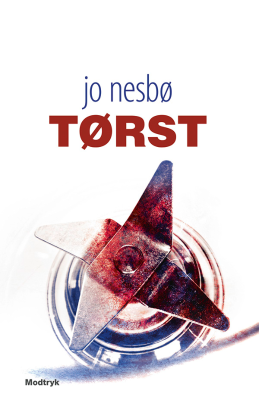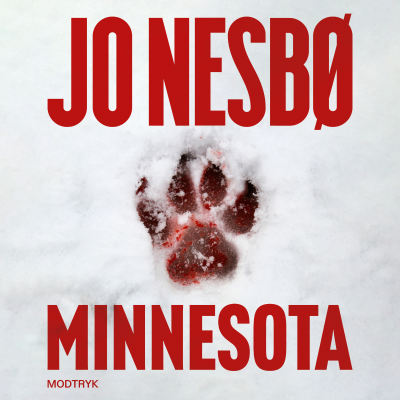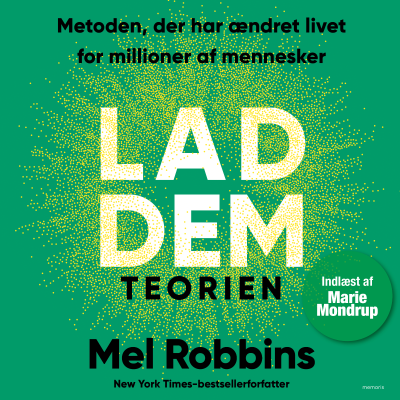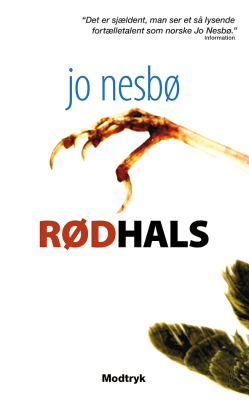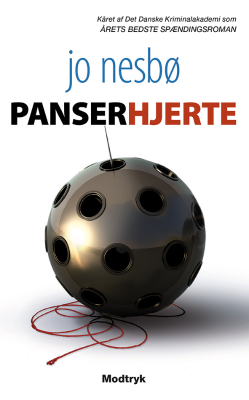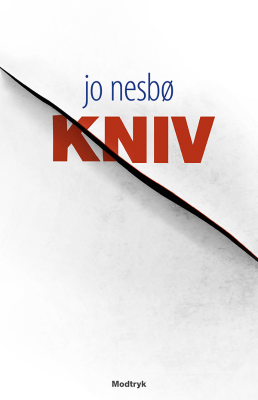
The PolicyViz Podcast
engelsk
Business
Begrænset tilbud
1 måned kun 9 kr.
Derefter 99 kr. / månedOpsig når som helst.
- 20 lydbogstimer pr. måned
- Podcasts kun på Podimo
- Gratis podcasts
Læs mere The PolicyViz Podcast
Learn how to be a great data communicator and visualizer with host Jon Schwabish. Hear from experts in the fields of data science, data visualization, and presentation skills to improve how you and your organization collect, analyze, and communicate your data in better, more efficient, and more effective ways.
Alle episoder
298 episoderInside IEEEVIS 2025: Key Themes, Best Papers, and the Future of Visualization
In this episode, I sit down with Alvitta Ottley and Paul Parsons to recap everything that happened at the 2025 IEEE VIS Conference in Vienna. We talk about our experiences co-organizing the VisCom workshop, the surprising attendance, and the standout keynote from Moritz Stefaner. Alvitta shares insights on accessibility research and the surge of LLM-focused visualization papers, while Paul walks us through his award-winning work on design cognition and how practitioners develop ideas. We also reflect on the evolving identity of the visualization field, from methodological rigor to the role of practitioners, interdisciplinarity, and ethical tensions. It’s a wide-ranging, candid conversation about where visualization research is headed — and what we hope to see next year in Boston. Subscribe to the PolicyViz Podcast wherever you get your podcasts. Become a patron of the PolicyViz Podcast [https://patreon.com/policyviz?utm_medium=unknown&utm_source=join_link&utm_campaign=creatorshare_creator&utm_content=copyLink] for as little as a buck a month Check out the VIS website [https://ieeevis.org/year/2025/welcome]. Follow me on Instagram [https://www.instagram.com/jschwabish/?hl=en], LinkedIn [https://www.linkedin.com/in/jonathanschwabish/], Substack [https://jschwabish.substack.com/], Twitter [https://twitter.com/jschwabish], Website [https://policyviz.com/], YouTube [https://www.youtube.com/c/JonSchwabish] Email: jon@policyviz.com [jschwabish@gmail.com]
Exploring Creative Data Visualization with Nadieh Bremer
In this episode, I sit down with Nadieh Bremer to talk about her new book, Chart, and the creative process behind her data visualization work. We discuss how she structures the book around a spectrum from straightforward charts to full-on data art, and why uncommon chart types can communicate nuance so effectively. Nadieh shares insights from her time in a makerspace, how physical-making influences her digital work, and why sketching after exploring the data is so important. We also talk about client work, design decisions, and how she thinks about success in her projects. It’s a fun, wide-ranging conversation that highlights why Nadieh remains one of the most thoughtful voices in the field. Keywords: Nadieh Bremer, data visualization, creative dataviz, data art, uncommon charts, Sankey diagrams, data storytelling, interactive visualization, static visualization, design process, sketching, makerspace, creative charts, PolicyViz Podcast Subscribe to the PolicyViz Podcast wherever you get your podcasts. Become a patron of the PolicyViz Podcast [https://patreon.com/policyviz?utm_medium=unknown&utm_source=join_link&utm_campaign=creatorshare_creator&utm_content=copyLink] for as little as a buck a month Get Nadieh's latest book, Chart [https://amzn.to/48gv5aM], her previous book Data Sketches [https://amzn.to/48eKUyC], and check out her website, VisualCinnamon.com [https://www.visualcinnamon.com/]. Follow me on Instagram [https://www.instagram.com/jschwabish/?hl=en], LinkedIn [https://www.linkedin.com/in/jonathanschwabish/], Substack [https://jschwabish.substack.com/], Twitter [https://twitter.com/jschwabish], Website [https://policyviz.com/], YouTube [https://www.youtube.com/c/JonSchwabish] Email: jon@policyviz.com [jschwabish@gmail.com]
The Future of Dashboards, Data Apps, and AI with Plotly's Chris Parmer
In this week’s episode, I talk with Chris Parmer, co-founder of Plotly, about how the company is integrating AI into the next generation of data visualization and analytics tools. Chris walks me through the thinking behind Plotly Studio, their new AI-native environment where natural language prompts generate real, auditable code for charts, dashboards, and data apps. We discuss how this approach reduces bottlenecks for data teams, empowers non-technical users, and reshapes the role of the data visualization expert. We also dive into the limits of public dashboards, the rise of generative interfaces, and what a future of AI-driven exploratory analysis might look like. It’s a fascinating look at where data tools are heading and how analysts can stay ahead. Keywords: Plotly, Plotly Studio, data visualization, AI tools, generative AI, dashboards, data apps, Python, code generation, data workflows, data analysis, natural language interfaces, data science, analytics, enterprise data security, data storytelling, Jon Schwabish, Chris Parmer Subscribe to the PolicyViz Podcast wherever you get your podcasts. Become a patron of the PolicyViz Podcast [https://patreon.com/policyviz?utm_medium=unknown&utm_source=join_link&utm_campaign=creatorshare_creator&utm_content=copyLink] for as little as a buck a month Check out Plotly at: https://plotly.com/ [https://plotly.com/] Follow me on Instagram [https://www.instagram.com/jschwabish/?hl=en], LinkedIn [https://www.linkedin.com/in/jonathanschwabish/], Substack [https://jschwabish.substack.com/], Twitter [https://twitter.com/jschwabish], Website [https://policyviz.com/], YouTube [https://www.youtube.com/c/JonSchwabish] Email: jon@policyviz.com [jschwabish@gmail.com]
Beyond the Visual: How Tactile Maps Expand Data Accessibility
In this week’s episode, I welcome Jakub Wabiński and Vincent van Altena to the show to talk about their new book, Tactile Mapping. We explore how tactile and multisensory design can make maps—and data—more accessible for people with visual impairments and beyond. Jakub and Vincent share insights into how tactile maps are designed, tested, and used in real-world settings like museums and public spaces. We also discuss user-centered design, the challenges of scaling inclusive practices, and how tactile mapping can help everyone better understand and navigate the world around them. Keywords: Jakub Wabiński, Vincent van Altena, PolicyViz Podcast, Jon Schwabish, tactile mapping, inclusive cartography, data accessibility, tactile design, haptic maps, visual impairments, data visualization, inclusive design, spatial data, accessibility in mapping, geovisualization, map design, tactile graphics, inclusive data storytelling, multisensory design, universal design, ICA working group, TREP project, accessible data visualization Subscribe to the PolicyViz Podcast wherever you get your podcasts. Become a patron of the PolicyViz Podcast [https://patreon.com/policyviz?utm_medium=unknown&utm_source=join_link&utm_campaign=creatorshare_creator&utm_content=copyLink] for as little as a buck a month Check out Jackub and Vincent's book Tactile Mapping [https://amzn.to/43i5eh9] Follow me on Instagram [https://www.instagram.com/jschwabish/?hl=en], LinkedIn [https://www.linkedin.com/in/jonathanschwabish/], Substack [https://jschwabish.substack.com/], Twitter [https://twitter.com/jschwabish], Website [https://policyviz.com/], YouTube [https://www.youtube.com/c/JonSchwabish] Email: jon@policyviz.com [jschwabish@gmail.com]
Telling Stories with Maps: Allen Carroll on the Art of Map-Based Storytelling
Welcome back to the show! In this week’s episode, I chat with Allen Carroll, former Chief Cartographer at National Geographic and part of Esri’s StoryMapsteam. We talk about his new book, Telling Stories with Maps, which explores how maps can communicate meaning, emotion, and narrative. Allen shares his journey from analog map design to interactive, multimedia storytelling—and how digital tools are transforming the way we visualize place and data. We also discuss design choices, the balance between creativity and accessibility, and why storytelling is at the heart of effective communication. It’s a fascinating look at the intersection of geography, design, and technology. Check out Allen's book on Amazon [https://amzn.to/4qD6wNF] or wherever you get your books. Subscribe to the PolicyViz Podcast wherever you get your podcasts. Become a patron of the PolicyViz Podcast [https://patreon.com/policyviz?utm_medium=unknown&utm_source=join_link&utm_campaign=creatorshare_creator&utm_content=copyLink] for as little as a buck a month Follow Giorgia on Twitter [https://twitter.com/giorgialupi] and find her book “This is Me and Only Me [https://amzn.to/47bhvEG]” on Amazon Follow me on Instagram [https://www.instagram.com/jschwabish/?hl=en], LinkedIn [https://www.linkedin.com/in/jonathanschwabish/], Substack [https://jschwabish.substack.com/], Twitter [https://twitter.com/jschwabish], Website [https://policyviz.com/], YouTube [https://www.youtube.com/c/JonSchwabish] Email: jon@policyviz.com [jschwabish@gmail.com]
Vælg dit abonnement
Begrænset tilbud
Premium
20 timers lydbøger
Podcasts kun på Podimo
Gratis podcasts
Opsig når som helst
1 måned kun 9 kr.
Derefter 99 kr. / måned
Premium Plus
100 timers lydbøger
Podcasts kun på Podimo
Gratis podcasts
Opsig når som helst
Prøv gratis i 7 dage
Derefter 129 kr. / month
1 måned kun 9 kr. Derefter 99 kr. / måned. Opsig når som helst.










